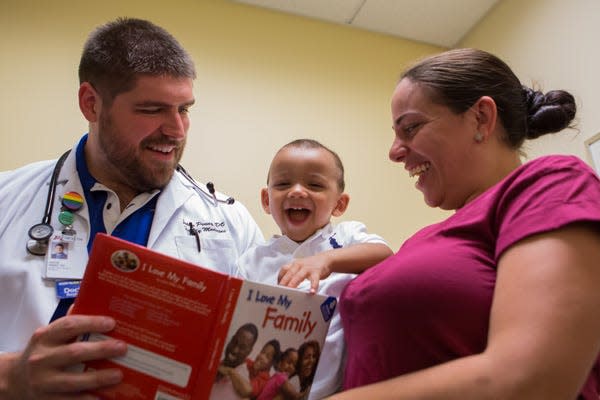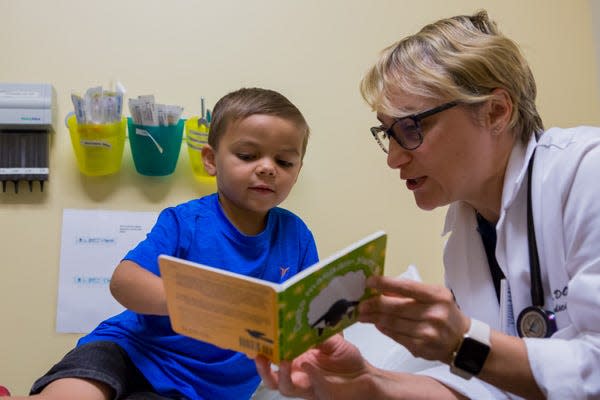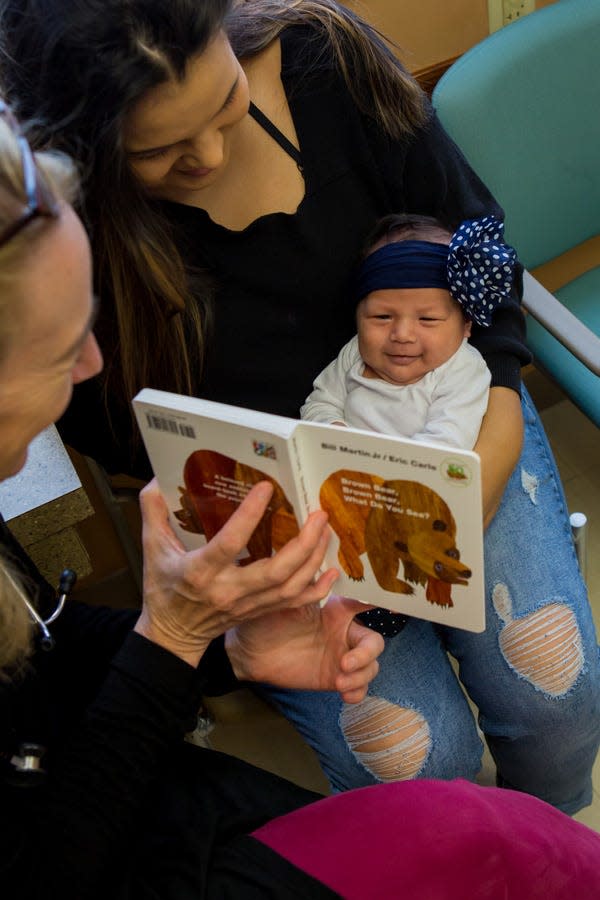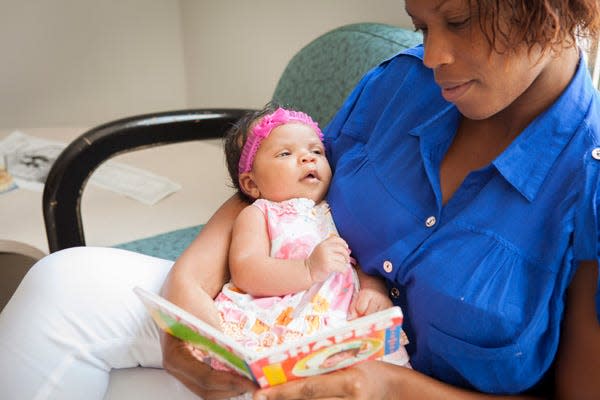Reach Out and Read - Making the brain-books connection
Mary Margaret Flowers doesn’t know that the board books she loves are helping her develop language and so much more. But her mom, Betsy Flowers, does. At just 20 months old, Mary Margaret is already part of an important partnership between parents and healthcare providers through the nonprofit Reach Out and Read.
A new peer-reviewed study in “Academic Pediatrics” demonstrates the impact of the national program in which medical providers caring for children offer guidance to parents and caregivers about the importance of reading aloud. The research shows that parents and caregivers exposed to Reach Out and Read are significantly more likely to read with their infants and young children every day and to use books to better engage with their young children.

The idea is simple and impactful: during routine well-child visits, Reach Out and Read providers talk with parents and caregivers about how to use books to engage with their babies and young children, and they give children age-appropriate books to take home. The program serves 4.2 million children each year. In North and South Carolina, it includes hundreds of primary care providers.
“At Mary Margaret's well check visit, she gets a book,” Flowers, a Greenville resident, said. “And we found that the program is really exciting for her and for us, too. You kind of have a little sursy to take home with you after that visit, and it gives her something to look forward to. And then it's something that we can do together when we're home.”
The love of books is already taking hold. Flowers said her daughter is making the connection between things they read about – like airplanes and cows – and seeing those objects in the real world. It is the continuation of a family value for Flowers, but one that is enhanced by partnering with her child’s pediatrician.

“Mary Margaret loves to read,” Flowers said. “I kid you not – when she wakes up in the morning, she looks over at her little bookshelf, and she points and says, ‘book.’ My grandmother was an English professor, so that was always ingrained in us that you're going to learn the most by reading. I do feel even though I did have that background, and it's always been such an important thing to my family, I still didn't quite understand that it is so important to start as soon as they're born. I remember the pediatrician talking to us about that.”
Rebecca Putnam is a family physician at Mountain Area Health Education Center in Asheville. She has participated in the program for years.
“I think this is an incredibly important program and especially in the patient population that we serve, that is a high proportion of people facing unstable housing, low socioeconomic status,” she said. “I'm able to both give the kiddo a book during my office visit, and then also watch them and their families interact together with that book after I give it to them – also showing the parents how to interact with that book and help promote literacy with their kiddos.”
That shared interaction makes a difference.

“I thought that reading to a kid should come naturally, until I had my own child,” Putnam said. “When you have a book, for example, that is just one word and a picture on each page, it's really easy as a parent to just flip through it really quick and read all the words and keep turning the pages. That seems like it might make sense sometimes to an adult, but that's not helping the kiddo get their best experience with it.”
Instead, Putnam now models the interaction that can help children get the most out of that reading time.
“Showing the parent in the visit – ‘oh, it's a bird, you see that bird? What color is it? Birds fly in the sky’ – breaking it down a lot more, modeling that to a family that might not themselves be readers,” she said. “It's really fun to model for them how to interact with that book to get their kiddo’s attention. Watching that child's interaction with the book is a way to also assess their developmental milestones. It might be normal, especially for our younger kiddos, to just want to eat it. Sometimes if a parent sees that they might think that they're doing it wrong. That's still them exploring it, and that might be an appropriate way for them to use a book at their age.”
Putnam said she is able to order bilingual books as well, and that creates a special bonding time for families across languages.

“Not all caregivers of a child might speak the same language, and I think it's very special when maybe the parents speak English and are able to read the book in English to a kiddo or interact in English, and then the grandparents may speak Spanish,” she said.
Reach Out and Read is a nonprofit organization that gives young children a foundation for success by incorporating books into pediatric care and encouraging families to read aloud together. It is endorsed by the American Academy of Pediatrics and serves children in all 50 states through 6,000 clinics and 33,000 clinicians. For more information and to access resources for parents, visit reachoutandread.org.
This article originally appeared on Greenville News: Reach Out and Read - Making the brain-books connection
